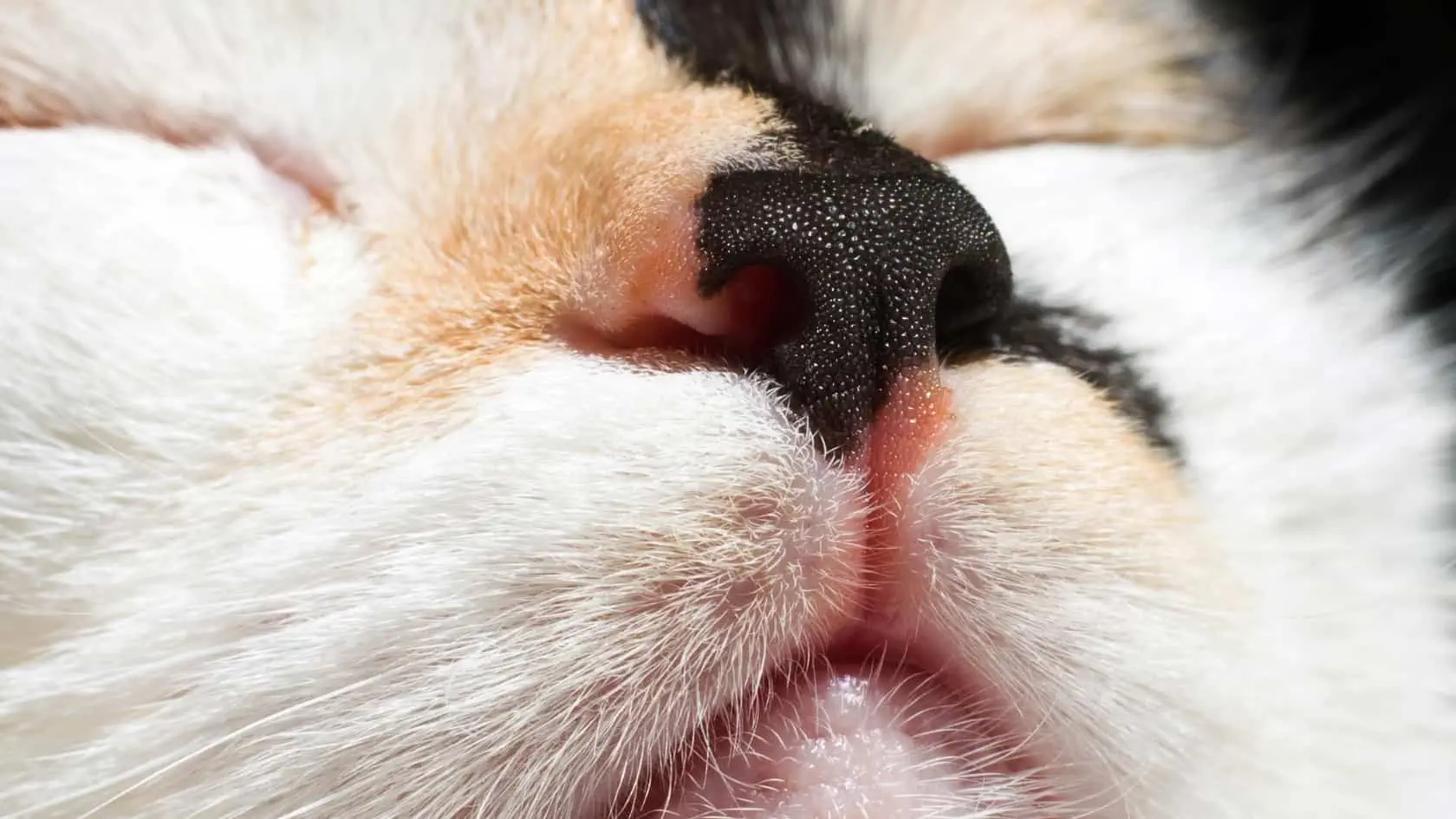The Best Fluffy Pancakes recipe you will fall in love with. Full of tips and tricks to help you make the best pancakes.

Welcome to ‘Felines Find Bliss: The Power of Olfactory Enrichment,’ a compelling study into the aromatic world that captivates our feline friends.
This research provides a deeper understanding of how various scents influence cat behavior and well-being. By analyzing reactions to different olfactory stimuli, the study offers invaluable insights for those dedicated to improving the lives of domestic and wild cats through sensory enrichment.
The study also emphasizes the importance of fostering environments that cater to their instinctual needs for exploration and play.
Key Takeaways
- Olfactory enrichment using plants can elicit positive responses in cats, including sniffing, licking, head shaking, rubbing, and rolling.
- Different plants, such as silver vine, catnip, honeysuckle, and valerian, have varying response rates in cats, with silver vine being the most effective.
- Olfactory enrichment provides mental stimulation and activity for cats, encouraging positive behaviors and can be used as rewards in training.
- Big cats, like tigers, may not respond to olfactory enrichment in the same way as domestic cats, suggesting a potential genetic difference in their response.
Exploring Olfactory Stimuli
Exploring various olfactory stimuli has shed light on the potential for enhancing the well-being of both domestic and wild felines through scent-based enrichment.
Such explorations have revealed that different types of plants can be instrumental for olfactory enrichment, including not just the well-known catnip, but also alternatives like silver vine, honeysuckle, and valerian. These plants evoke a range of behaviors from sniffing to rolling, suggesting a positive engagement with the provided scents.
Intriguingly, the effect of age on catnip response intensity has been noted, indicating that younger cats may exhibit more pronounced reactions than their older counterparts. Understanding these dynamics allows caregivers to tailor enrichment strategies that cater to individual preferences and life stages, thereby nurturing feline well-being through thoughtful sensory engagement.
Cat Reactions to Scents
Nearly all felines in the study exhibited some form of positive engagement when introduced to the various olfactory stimuli. Observations revealed a spectrum of behaviors, from the classic euphoric rolling and rubbing to more subdued sniffing and licking.
The investigation into catnip alternatives such as silver vine, valerian, and honeysuckle demonstrated that cat preferences are diverse, and that these alternatives can be as compelling as the traditional catnip. Interestingly, age and scent response appeared to be correlated, with younger cats showing more pronounced reactions to these scents. This suggests a potential diminishment in sensory perception or a change in receptor sensitivity with age.
These findings underscore the importance of offering a variety of olfactory experiences to cater to individual preferences and to maintain sensory enrichment throughout a cat’s life.
Benefits of Scent Enrichment
While the diverse reactions of cats to different olfactory stimuli have been well-documented, the benefits of scent enrichment extend beyond mere enjoyment, playing a crucial role in the behavioral and psychological well-being of felines.
Scent therapy, in particular, can significantly enhance the environment for domestic cats, especially those in confinement such as shelter cats. By introducing a variety of scents, cats are provided with mental stimulation that mimics their natural behaviors, such as hunting and territory marking. This can lead to reduced stress levels, lower incidences of anxiety, and decreased aggression.
For shelter cats, scent enrichment can be a transformative experience, offering comfort and engagement in an otherwise limited space, thereby improving their quality of life and even aiding in their adoptability.
Maximizing Olfactory Experiences
To optimize the sensory stimulation of felines, one must consider the range and variability of scents that elicit the most profound behavioral responses.
Increasing scent engagement in cats is not simply about presenting any scent; it involves understanding and catering to individual scent preferences.
By offering a curated selection of olfactory stimuli, one can greatly enhance a cat’s environment and overall well-being.
The aforementioned study highlights the varying responses to substances like silver vine and catnip, suggesting that exposure to a spectrum of scents can maximize olfactory experiences for felines.
An analytical approach to this enrichment recognizes that while some cats may be indifferent to certain scents, others might be deeply affected, underscoring the importance of individualized scent strategies.
Big Cats and Aromatic Responses
Although domestic cats exhibit varied reactions to olfactory stimuli, big cats such as tigers and bobcats demonstrate distinct behavioral responses when exposed to aromatic substances like catnip and silver vine.
These responses offer insight into the complex world of feline scent preferences and underscore the role genetic differences may play in how these animals perceive their environment.
By understanding and catering to these preferences, caregivers and researchers can enhance the welfare of these majestic creatures.
- Genetic Makeup: Potential genetic differences influence olfactory responses, suggesting a hereditary basis for scent preferences.
- Enrichment Variability: Individual big cats show unique interest in specific scents, which can aid in environmental enrichment strategies.
- Behavioral Indicators: Observable behaviors such as rolling and rubbing may indicate pleasure and well-being in response to scent exposure.
- Conservation Implications: Knowledge of aromatic preferences can be applied to captive breeding programs to promote natural behaviors.
How Does Olfactory Enrichment Benefit Cats, and Can Tail Scratching Provide Similar Benefits?
Olfactory enrichment stimulates a cat’s keen sense of smell, reducing stress and encouraging natural behaviors. Similarly, the pleasure of tail scratching offers tactile satisfaction and may relieve anxiety, akin to the contentment found through scent exploration. Both activities enrich feline lives, enhancing their well-being.
Final Thoughts
The study on olfactory enrichment demonstrates its vital role in enhancing the well-being of felines.
Exposure to varied scents, beyond catnip, has been shown to elicit positive behavioral responses and promote mental stimulation in both domestic and larger feline species.
This research underscores the importance of incorporating scent-based enrichment into feline care practices, thereby advocating for a more holistic approach to improving the quality of life for these creatures across diverse environments.










